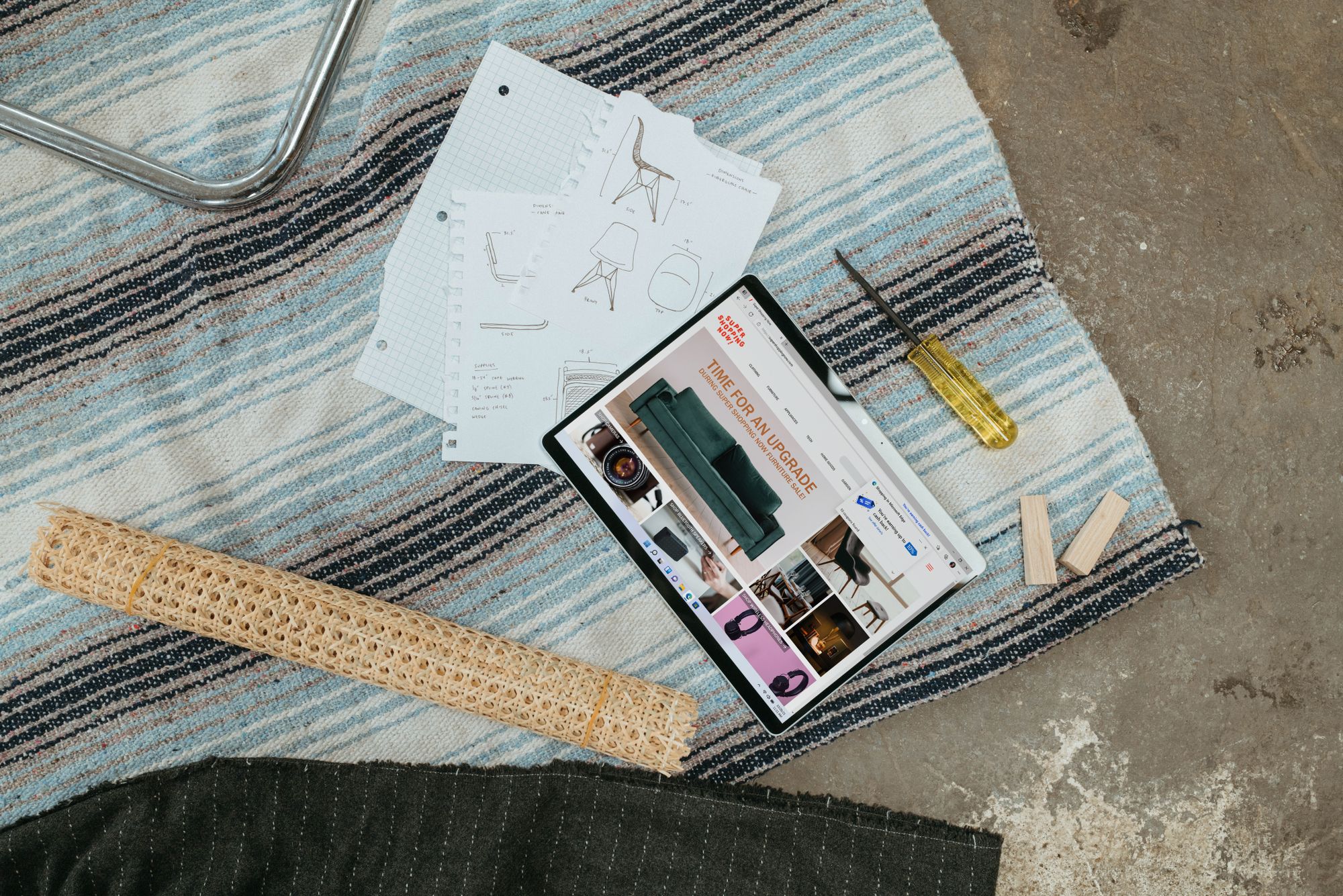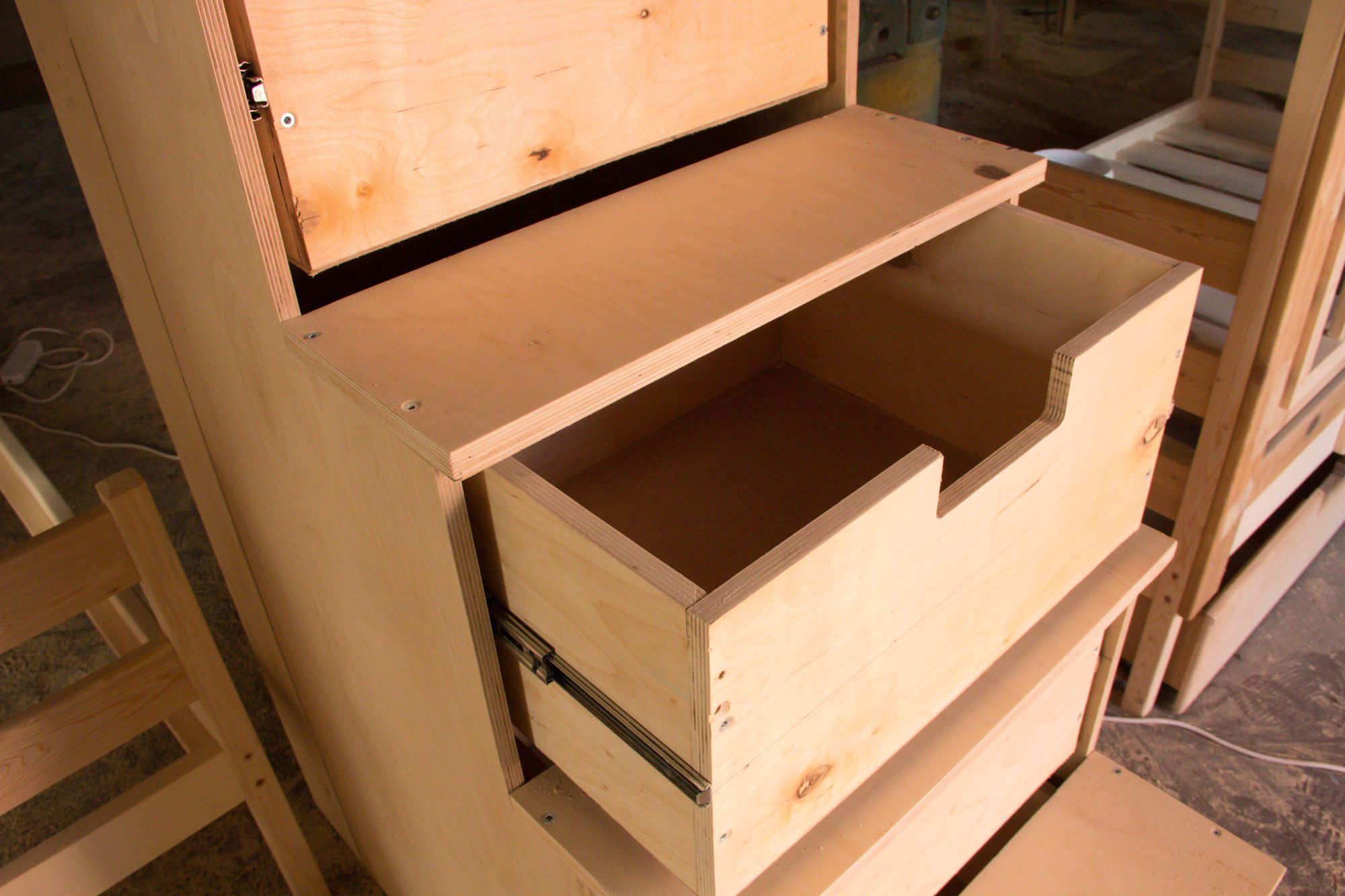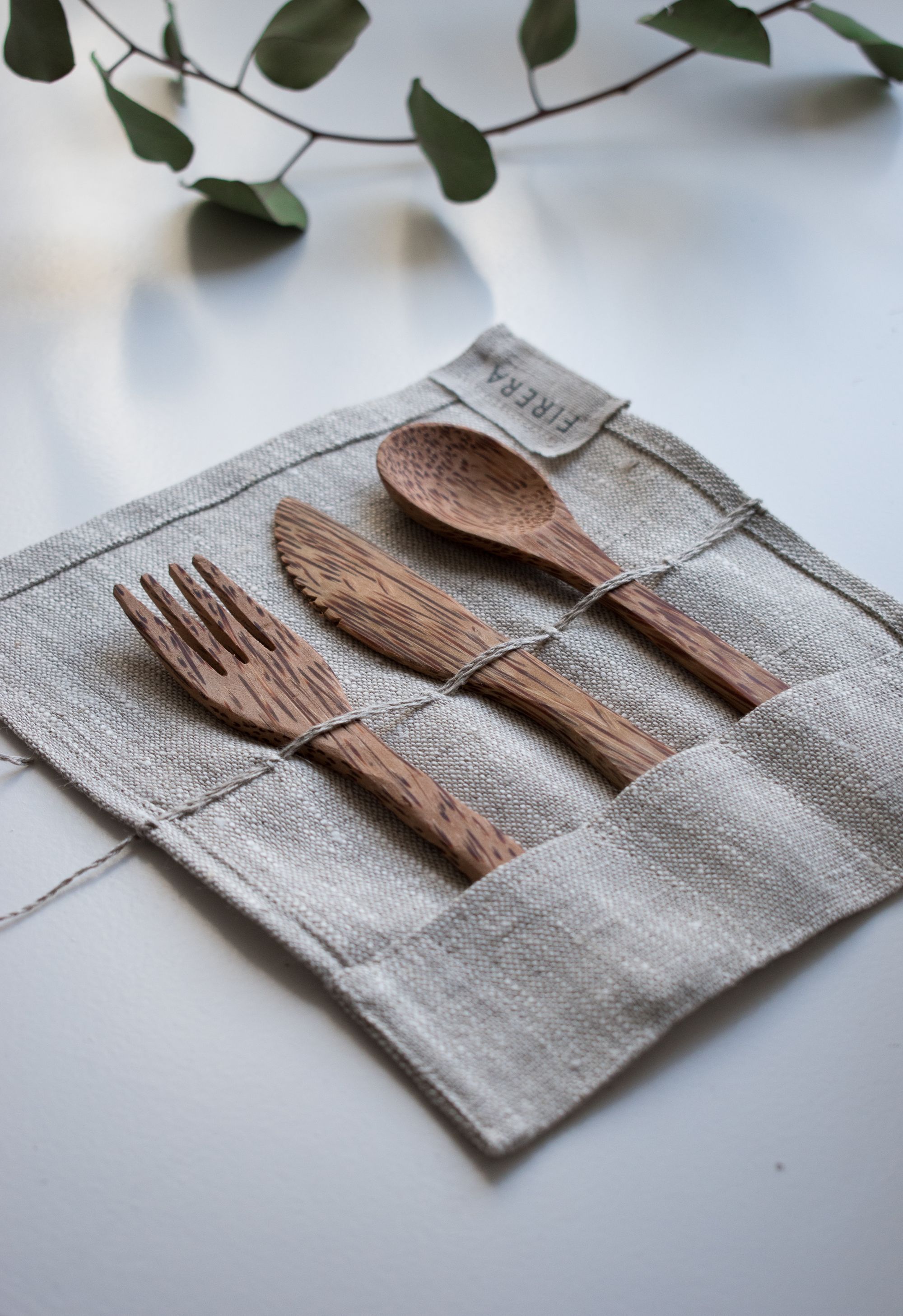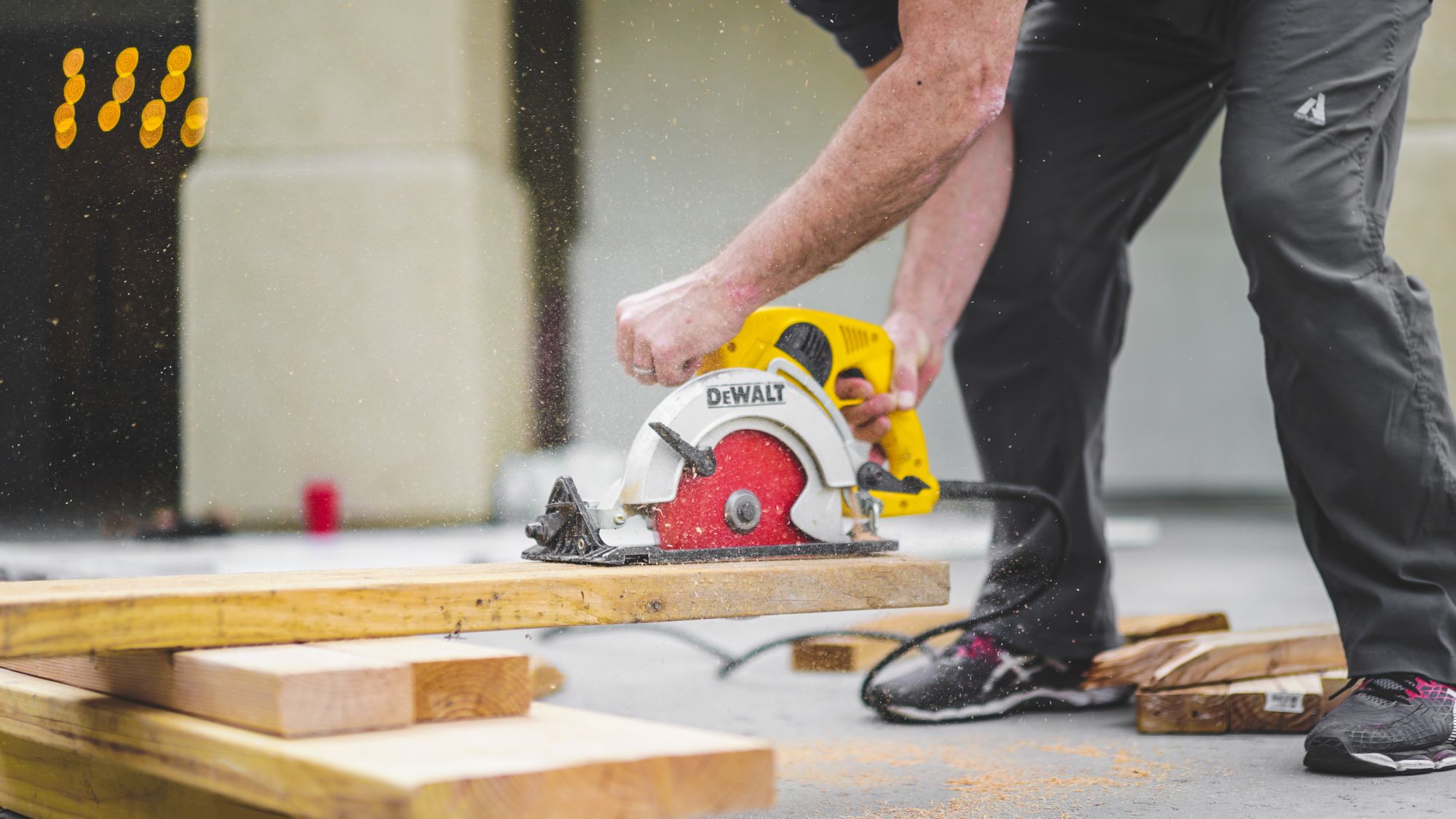Manufacturing has been undergoing a transformation in recent years. With the rise of new technologies, the way furniture is manufactured is changing. Innovations in technology are allowing furniture manufacturers to create products with greater precision, efficiency, and sustainability.

This article covers the following:
- The Benefits of Innovative Manufacturing in Furniture Manufacturing
- How to Utilize the Latest Technology in Furniture Manufacturing?
- The Impact of Automation on Furniture Manufacturing
- What Materials Are Used for Innovative Manufacturing?
- The Role of Robotics in Furniture Manufacturing
- What is 3D Printing, and How Does it Impact Furniture Manufacturing?
- The Benefits and Drawbacks of CNC Machining in Furniture manufacturing
- How to Use CAD/CAM in Furniture Making
- The Advantages of Laser Cutting in Furniture Making
- The Impact of Augmented Reality on Furniture Making
- How Can Deskera Assist You?
The Benefits of Innovative Manufacturing in Furniture Making
Manufacturing of furnitures is an age-old industry that has been around for centuries. Over the years, furniture makers have come up with innovative ways to produce furniture faster, more efficiently, and more cost-effectively. This is why innovative manufacturing is so important in the furniture manufacturing industry.
Let’s take a look at some of the benefits of using innovative manufacturing techniques in furniture making.
Improved Efficiency
By using innovative manufacturing techniques, furniture makers can reduce the amount of time and effort needed to produce a piece of furniture. This allows them to produce more pieces in the same amount of time, resulting in improved efficiency.
Cost Savings
By using innovative manufacturing techniques, furniture makers can often reduce the cost of manufacturing each piece of furniture. This can result in savings that can be passed on to the consumer.
Environmentally Friendly
By using innovative manufacturing techniques, furniture makers can reduce their reliance on materials that are damaging to the environment. This can help reduce the carbon footprint of furniture production and make furniture more sustainable.
Improved Quality
By using innovative manufacturing techniques, furniture makers can produce furniture that is of higher quality. This can result in increased customer satisfaction and loyalty.
Increased Productivity
By using innovative manufacturing techniques, furniture makers can increase their productivity and produce more furniture in less time. This can result in more profits for the company. Innovative manufacturing is an essential part of the furniture-making industry.
By using innovative manufacturing techniques, furniture makers can reduce the cost of production, improve the efficiency of production, and create furniture that is of higher quality. This can result in increased profits for the company and improved customer satisfaction.
Therefore, it is important for furniture makers to embrace innovative manufacturing techniques in order to stay competitive in the furniture manufacturing industry.
How to Utilize the Latest Technology in Furniture Manufacturing?
The furniture industry is constantly changing, with new technology and manufacturing techniques being developed. As a result, it is important for furniture manufacturers to stay up-to-date on the latest advancements in the industry.
By utilizing the latest technology available, furniture manufacturers can increase the efficiency of their products and create higher-quality pieces that are more attractive to customers.
Here are some of the ways that furniture manufacturers can use the latest technology in their production process:
Automation
Automation is one of the most popular ways for furniture manufacturers to increase efficiency and reduce costs. Automation involves the use of computer-controlled machines to perform tasks such as cutting, drilling, and assembling furniture parts.
This reduces the need for manual labor, allowing manufacturers to produce more pieces in a shorter amount of time. Automation also allows furniture manufacturers to maintain consistent quality levels in their pieces.
3D Printing
3D printing is another technology that is becoming increasingly popular in the furniture industry. 3D printing creates furniture pieces quickly and accurately, with intricate details and designs.
This technology can be used to create personalized pieces or complex structures that are difficult to achieve with traditional methods. 3D printing also allows manufacturers to save time and money by reducing the need for manual labor and materials.
Laser Cutting
Laser cutting is a technology that is commonly used in the furniture industry for the precise cutting and engraving of materials. This technology allows for intricate detailing and designs on pieces, as well as faster production times. Laser cutting is also used for cutting complex shapes and creating complex joints for furniture pieces.
Computer Numerical Control (CNC)
CNC machines are computer-controlled machines that are used to create precise shapes and designs in furniture pieces. CNC machines are programmable, allowing manufacturers to create intricate pieces quickly and accurately. CNC machines are also used to cut and assemble furniture parts, reducing the need for manual labor.
Virtual Reality
Virtual reality technologies are becoming increasingly popular in the furniture industry.
These technologies allow manufacturers to create virtual models of their furniture pieces, allowing them to view the pieces from different angles and make adjustments as needed.
Virtual reality technologies also allow for the creation of custom pieces that can be tailored to specific customer needs. By utilizing the latest technology in furniture manufacturing, furniture manufacturers can increase their efficiency and reduce costs while creating high-quality pieces that are attractive to customers. This technology can also help manufacturers create unique pieces that meet the demands of their customers.
The Impact of Automation on Furniture
When it comes to furniture manufacturing, automation is having a major impact on the industry. Automation has enabled furniture manufacturers to produce products faster and more efficiently than ever before.
It has also allowed furniture manufacturers to reduce costs and increase their profitability. Automation has also made it possible for furniture manufacturers to create custom pieces that are tailored to their customer’s unique needs.
Automation has allowed furniture manufacturers to produce more complex designs and shapes with greater accuracy and precision. This has enabled them to produce furniture pieces that are of higher quality than ever before.
Automation has also allowed furniture manufacturers to create pieces with a greater range of materials, including wood, plastics, and metals. This has allowed furniture manufacturers to create pieces that are both attractive and durable.
Automation has also made it easier for furniture manufacturers to keep up with changing trends in the industry. Automated machinery can be configured to quickly adapt to new trends and styles, allowing furniture manufacturers to keep up with the times.
Automation has also allowed furniture manufacturers to reduce the amount of time it takes to produce pieces, which has enabled them to deliver orders to their customers faster.
Automation has enabled furniture manufacturers to streamline their production processes, which has enabled them to increase their efficiency and reduce their costs. Automation has also enabled furniture manufacturers to reduce their labor costs, as fewer workers are required to operate the machinery.
Automation has also allowed furniture manufacturers to reduce the amount of waste they produce, as the machinery produces fewer mistakes and produces fewer defective pieces.
Overall, automation has had a huge impact on the furniture manufacturing industry. Automation has enabled furniture manufacturers to produce pieces faster and more efficiently, with greater accuracy and precision.
It has also allowed furniture manufacturers to reduce costs and increase their profitability. Automation has also allowed furniture manufacturers to create custom pieces that are tailored to their customer’s unique needs.
Automation has enabled furniture manufacturers to keep up with changing trends in the industry and has enabled them to reduce their labor costs and waste production. Automation has had a huge positive impact on the furniture manufacturing industry, and it is only going to continue to do so in the future.
What Materials Are Used for Innovative Manufacturing?
Innovation in manufacturing is the process of using new materials and techniques to create products that have never been seen before. This can involve using new materials, such as plastics, composites, and advanced alloys, or new processes, such as 3D printing or laser-cutting.
It can also involve combining different materials and processes to create something completely new. The materials used for innovative manufacturing depend largely on the type of product being made.
For instance, a new medical device might require a combination of metals, plastics, and composites. On the other hand, a new consumer electronics product might be made out of a combination of plastics and printed circuit boards.
One of the most important materials used in innovative manufacturing is plastic. Plastics are used in a variety of products due to their versatility and low cost. They are often used as the main material in 3D printing and can be used in combination with other materials to create strong, lightweight parts.
Advanced alloys are also used in innovative manufacturing. These alloys are composed of different metal elements and are often used for components that need to be both strong and lightweight.
They are often used in the aerospace industry, as well as in medical devices and other complex products. Composites are also used in innovative manufacturing. These materials are composed of a combination of materials, such as plastics, fibers, and resins.
They are often used to make lightweight, high-strength parts that are resistant to wear and tear. Finally, 3D printing is a popular form of innovative manufacturing. This process involves using a 3D printer to create a three-dimensional object from a digital file.
3D printing has revolutionized the way that products are designed and manufactured, allowing manufacturers to create complex parts that would otherwise be too difficult or expensive to produce.
Overall, the materials used for innovative manufacturing depend on the type of product being made. Plastics, composites, advanced alloys, and 3D printing all play important roles in the development of new, innovative products. By combining these materials and processes, manufacturers are able to create products that have never been seen before.
The Role of Robotics in Furniture Making
Robotics is becoming an increasingly important part of furniture making. As automation technology evolves, robots are being used to make furniture faster, more efficiently, and with higher quality. In fact, the use of robots in furniture manufacturing is one of the most important trends in the industry today.
Robots are used for a variety of tasks in furniture making. They can be used for cutting, drilling, sanding, welding, and assembling. In addition, robots can be programmed to perform specific tasks such as gluing and sealing.
This allows for a greater level of precision and accuracy than humans can achieve. Robots can be used to cut and shape wood, metal, and other materials. This allows furniture makers to create complex designs that would be difficult or impossible to achieve with traditional methods.
In addition, robots can be programmed to assemble items quickly and efficiently. This reduces the amount of time needed to complete a project. Robots can also be used to inspect the furniture for quality. This helps ensure that furniture is made to a high standard and meets customer expectations.
The use of robots also improves safety in the workplace, as they can be used to handle hazardous materials, such as strong adhesives, that can be dangerous to humans. Robots can be programmed to perform multiple tasks, allowing furniture makers to produce multiple products in a single production run.
This reduces costs and improves efficiency. In addition, robots can be programmed to perform tasks at a faster rate than humans, thus increasing productivity. While robots are becoming increasingly important in furniture making, they cannot replace humans completely.
Humans are still needed to program and maintain the robots, as well as to inspect and assemble the furniture. In addition, robots cannot create the unique and creative designs that humans are capable of.
The use of robotics in furniture making is changing the industry for the better. Robots can help furniture makers produce products faster, with greater accuracy and precision, and at a lower cost. As technology continues to evolve, robots will become even more important in the furniture-making process.
What is 3D Printing, and How Does it Impact Furniture Making?
3D printing, also known as additive manufacturing, is a process of creating physical objects from digital designs. It is an innovative technology that has revolutionized the way furniture is made.
This involves laying down successive layers of material to create an object, typically using plastic and metal. 3D printing is a game-changer for furniture making, as it allows for complex designs and shapes that are not possible with traditional manufacturing processes.
It also reduces the need for large, expensive tools and machinery, as 3D printers can be used to create parts with a high degree of accuracy and repeatability. 3D printing has opened up a world of possibilities for furniture makers.
It has allowed for more intricate designs, as well as the ability to create custom pieces. 3D printing also eliminates the need for long production times and expensive tooling, as parts can be created quickly and inexpensively.
Furthermore, 3D printing is a great way to reduce waste, as it eliminates the need for excess materials that would otherwise be thrown away. This reduces the environmental impact of furniture making, as fewer materials are used, and fewer resources are consumed in the manufacturing process.
Overall, 3D printing is an innovative technology that has revolutionized the way furniture is made. It allows for complex designs, faster production times, and reduced costs and waste. It is a great way to create custom pieces, as well as reduce the environmental impact of furniture making.
The Benefits and Drawbacks of CNC Machining in Furniture Making
CNC machining is a popular manufacturing process used in furniture and other industries to produce components with precise dimensions. CNC stands for Computer Numerical Control and is used in a variety of industries, including automotive and aerospace manufacturing, to create complex parts and components.
CNC machining has become increasingly popular in the furniture industry as it offers a number of advantages over traditional manufacturing methods. The Benefits of CNC Machining CNC machining offers many advantages to furniture makers, including
Precise Reproduction
CNC machines can produce parts with very precise dimensions, making it ideal for creating components with perfect symmetry and accuracy. This allows furniture makers to create components with the exact specifications they require.
Automation
CNC machines are fully automated, allowing furniture makers to quickly and easily produce parts in large quantities. This saves time and money compared to traditional manufacturing methods.
Quality
CNC machines produce components with a high level of accuracy and quality. This ensures that furniture makers can produce consistent and reliable components that meet their customer’s expectations.
Cost Savings
CNC machining can help furniture makers save money in the long run. It is much faster and more efficient than traditional methods, meaning that furniture makers can produce more components in less time, resulting in lower production costs. The Drawbacks of CNC Machining Although CNC machining offers many advantages to furniture makers, it does have a few drawbacks, including
High Setup Costs
CNC machines are expensive and require a significant amount of setup and maintenance. This can be a prohibitive cost for small businesses and can limit the use of CNC machines in furniture making.
Limited Materials
CNC machines are limited to working with specific materials. This can be an issue if a furniture maker needs to work with a particular material that CNC machines are unable to process.
Complexity
CNC machines can be complex and require a certain level of knowledge and skill to operate. This can make them difficult for novice furniture makers to use, as they must first become familiar with the process before they can start producing components.
Overall, CNC machining is a popular and effective manufacturing process for furniture makers. It offers a number of benefits, including precise reproduction, automation, quality, and cost savings.
However, there are a few drawbacks, including high setup costs, limited materials, and complexity. Furniture makers should carefully consider the pros and cons of using CNC machining before investing in this technology.
How to Use CAD/CAM in Furniture Making?
CAD/CAM (Computer-Aided Design/Computer-Aided Manufacturing) is a powerful combination of technologies used in the manufacturing industry. It is used to design, develop, and produce products with precision and accuracy.
The combination of CAD and CAM is particularly useful in furniture making, as it enables furniture makers to create complex designs with great speed and accuracy. CAD is the software used to design furniture.
It allows the furniture maker to create precise and complex designs that can be manipulated and visualized in 3D. The CAD software also allows the furniture maker to simulate the assembly of the furniture, as well as simulate the performance of the furniture in different environments.
CAM is the software used to manufacture the furniture. It allows the furniture maker to generate precise and accurate cutting paths for the machinery used to cut the materials. It can also be used to program the machinery for assembly and finishing operations such as drilling, sanding, and polishing.
The combination of CAD and CAM technologies in furniture making helps furniture makers to create complex and precise designs quickly and accurately. It also enables them to reduce costs by eliminating the need for costly manual processes.
Additionally, CAD/CAM allows furniture makers to create unique and customized furniture pieces, since the software can be used to create designs that are tailored to the customer’s specifications.
In order to make use of CAD/CAM in furniture making, the furniture maker must first create a CAD model of the furniture. This model can be created from either a 2D drawing or a 3D scan of the furniture.
Once the model is created, the furniture maker can then use the CAD software to create the design, simulate the assembly, and simulate the performance of the furniture. Once the design is complete, the furniture maker can then use the CAM software to generate the cutting paths for the machinery used to cut the materials.
The CAM software can also be used to program the machinery for assembly and finishing operations. Using CAD/CAM in furniture making enables furniture makers to create complex and precise designs quickly and accurately.
It also enables them to reduce costs by eliminating the need for costly manual processes. Additionally, CAD/CAM allows furniture makers to create unique and customized furniture pieces, since the software can be used to create designs that are tailored to the customer’s specifications.
The Advantages of Laser Cutting in Furniture Making
Laser cutting is a revolutionary technology that has dramatically changed the way furniture is made. This cutting-edge technology uses a high-powered laser beam to cut and shape materials with incredible accuracy and precision.
It can be used to cut through virtually any material, including wood, plastic, metal, and even glass. Laser cutting has become a go-to tool for furniture makers, as it offers a number of advantages.
One of the most important advantages of laser cutting is the accuracy it offers. Since the laser beam is so precise, it can cut complex shapes with ease. This makes it possible to create intricate designs more quickly and with more accuracy than ever before.
Additionally, laser cutting can be used to cut very thin pieces of material, such as veneers, that are too thin for traditional cutting methods. Another major advantage of laser cutting is the speed at which it can be used.
Laser cutting is faster than traditional cutting methods, allowing furniture makers to quickly produce complex pieces. This can help them to get products to market more quickly and ensure they remain competitive.
Laser cutting also offers a number of safety benefits. Since the laser beam is so precise, it can create small, precise cuts without the risk of sawdust or other particles getting into the air.
This can help to reduce the risk of breathing in harmful dust particles, making it a safer option for furniture makers. Finally, laser cutting is cost-effective. Since it is a more efficient way of cutting materials, it can help to reduce production costs.
Additionally, since the laser beam is so precise, it can help to reduce the amount of material that is wasted during the cutting process. This can help to save money and make the furniture-making process more cost-effective.
Overall, laser cutting is a revolutionary technology that has opened up new possibilities for furniture makers. It offers a number of advantages, including accuracy, speed, safety, and cost-effectiveness. Furniture makers who are looking to stay competitive should consider investing in a laser-cutting machine to take their business to the next level.
The Impact of Augmented Reality on Furniture Making
Augmented reality (AR) is quickly becoming a key technology in the furniture making industry. AR is a technology that combines real-world environments with virtual images and objects, allowing users to interact with the environment around them.
This technology has the potential to revolutionize the way furniture is made, allowing for faster and more efficient production, as well as creating more personalized and unique pieces.
The use of AR in furniture manufacturing has already begun to take off in many industries. From helping designers create and visualize furniture pieces before they are even built to allowing customers to interact with furniture in the showroom, AR is quickly becoming a key tool in the furniture making process.
One of the most exciting applications of AR in furniture making is its ability to streamline the design process. AR can be used to create 3D models of furniture pieces, allowing designers to visualize their creations in real time.
This can help furniture makers create more accurate designs, as well as speed up the design process. Additionally, AR can be used to create virtual showrooms, allowing customers to look at potential furniture pieces without having to leave their homes.
Another key benefit of AR in furniture making is its ability to create more personalized pieces. AR can be used to design furniture pieces that are tailored to a customer’s exact specifications. This allows furniture makers to create pieces that are truly unique, making them stand out in the marketplace.
Finally, AR can also help furniture makers save time and money. By automating certain aspects of the furniture making process, such as assembly and delivery, furniture makers can reduce their costs and speed up production.
This can allow them to produce more furniture in a shorter amount of time, making them more competitive in the marketplace. Overall, augmented reality is quickly becoming a key tool in the furniture-making industry.
This technology has the potential to revolutionize the way furniture is made, allowing for faster, more efficient, and more personalized pieces. As technology continues to develop, it is likely that AR will continue to play an increasingly important role in the furniture-making industry.
How Can Deskera Assist You?
As a manufacturer, you must keep track of your inventory stock. The condition of your inventory has a direct impact on production planning. It also has a direct impact on people and machinery use and capacity utilization.

Deskera MRP is the one tool that lets you do all of the above. With Deskera, you can:
- Control production schedules
- Compile a Bill of Materials
- Produce thorough reports
- Make your dashboard
Deskera ERP is a complete solution that allows you to manage suppliers and track supply chain activity in real-time. It also allows you to streamline a range of other company functions.
Deskera Books allows you to manage your accounts and finances better. It helps maintain good accounting standards by automating billing, invoicing, and payment processing tasks.
Deskera CRM is a powerful tool that organizes your sales and helps you close deals rapidly. It enables you to perform crucial tasks like lead generation via email and gives you a comprehensive view of your sales funnel.
Deskera People is a straightforward application for centralizing your human resource management activities. Not only does the technology expedite payroll processing, but it also helps you to handle all other operations such as overtime, benefits, bonuses, training programs, and much more.
Key Takeaways:
- Sustainable wood is becoming increasingly popular as people become more conscious of the environment and their impact on it.
- Sustainable wood is a great choice for furniture and home décor, as it helps reduce our impact on the environment.
- When it comes to sustainability, wood is one of the most abundant and renewable resources available to us.
- With the increasing concern about global warming and deforestation, it's important to make sure the wood we buy is sourced from sustainable sources.
- Many companies are now labeling their wood with labels that indicate where the wood was sourced and how it was harvested. Look for labels that say FSC-certified, SFI-certified, or PEFC-certified.
Related Articles:












